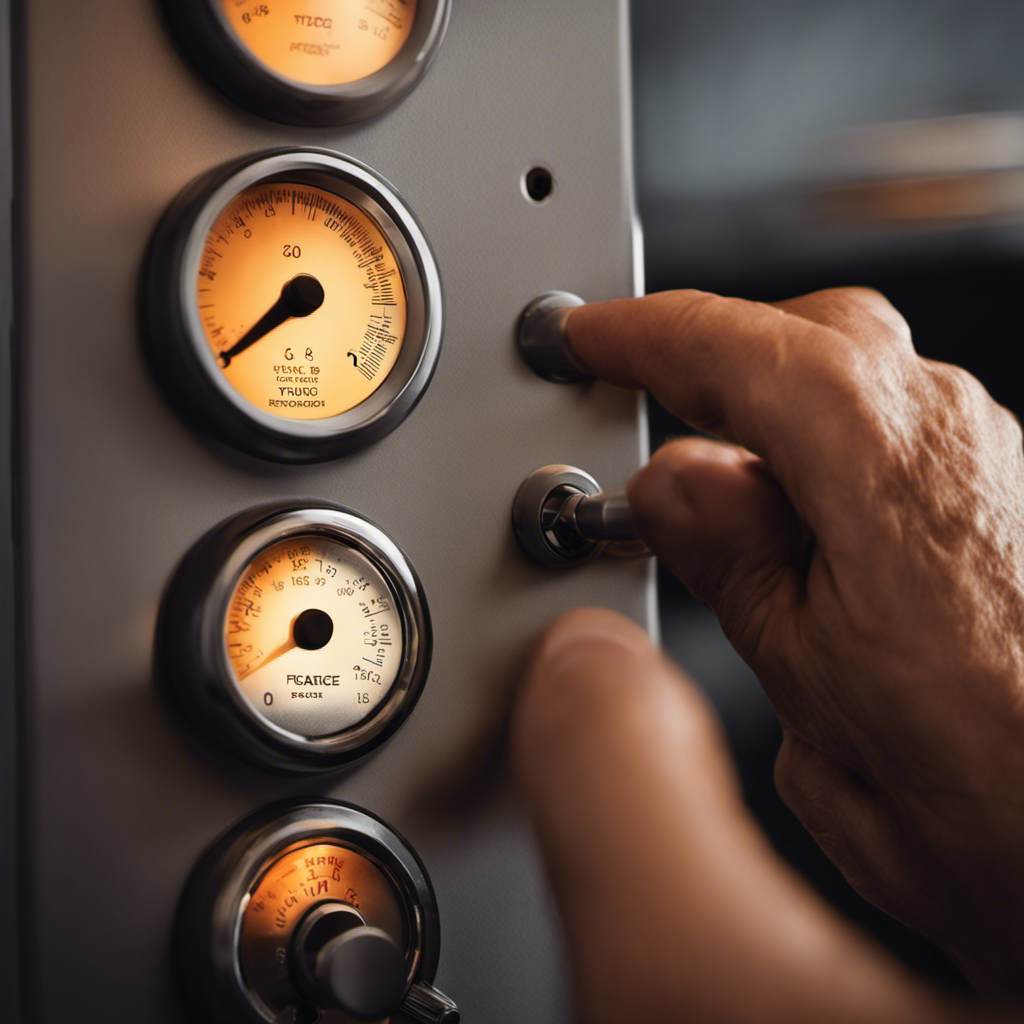Are you experiencing issues with your heating system and unsure whether the problem lies with the thermostat or the furnace? This article aims to provide clarity on how to identify and differentiate between thermostat and furnace problems.
By understanding common signs, testing the thermostat for functionality, and troubleshooting steps for a malfunctioning furnace, you will be equipped to determine the root cause of the issue.
Additionally, professional assistance is available to diagnose and resolve any thermostat and furnace related problems.
Key Takeaways
- Signs of thermostat issues include frequent temperature fluctuations, temperature changes without adjusting the thermostat, faulty thermostat sensor, wiring issues, and unresponsive or non-functioning thermostat.
- Indications of furnace problems include strange noises coming from the furnace, lack of heat despite thermostat being set to the desired temperature, burning smell from the furnace, mechanical issues within the furnace system, and problems with heating elements or blower motor.
- Testing the thermostat for functionality involves checking wiring connections, calibrating the thermostat, comparing thermostat reading to a separate thermometer, and observing furnace response when the thermostat is set to the desired temperature.
- Troubleshooting steps for a malfunctioning furnace include checking the power supply, verifying correct thermostat settings, inspecting and cleaning or replacing the air filter, checking the pilot light or ignition system, and seeking professional assistance if troubleshooting steps do not resolve the issue.
Common Signs of Thermostat Issues
One common sign of thermostat issues is the frequent temperature fluctuations within the home. If you notice that the temperature in your home is constantly changing, even though you haven’t adjusted the thermostat, it could indicate a problem with the thermostat. This could be caused by a faulty thermostat sensor or a wiring issue.
Another sign of thermostat issues is if the thermostat is unresponsive or not working at all. If you try to adjust the temperature but nothing happens, it may be time for thermostat troubleshooting or even a thermostat replacement.
It is important to address these issues promptly to ensure the comfort and well-being of your family.
Indications That the Problem Lies With the Furnace
Some common indications that the problem lies with the furnace include strange noises, a lack of heat, and a burning smell.
If your furnace is making unusual sounds such as banging, rattling, or squealing, it could be a sign that there is a mechanical issue within the system.
Another clear indication is when you are not receiving any heat despite the thermostat being set to the desired temperature. This could indicate a problem with the furnace’s heating elements or the blower motor.
Additionally, if you notice a burning smell coming from the furnace, it is crucial to address the issue immediately as it could be a sign of a more serious problem.
Regular furnace maintenance and timely furnace repairs can help prevent these issues and ensure the efficient functioning of your heating system.
How to Test the Thermostat for Functionality
To determine if the thermostat is functioning properly, it is important to perform a series of tests.
One of the first things to check is the thermostat wiring. Ensure that all connections are secure and that there are no loose or damaged wires.
Additionally, it is crucial to calibrate the thermostat to ensure accurate temperature readings. This can be done by comparing the thermostat reading to a separate thermometer placed nearby. If there is a significant difference, the thermostat may need to be recalibrated.
Another test is to set the thermostat to a desired temperature and observe if the furnace responds accordingly. If the furnace does not turn on or off as expected, it could be a sign of a malfunctioning thermostat.
Troubleshooting Steps for a Malfunctioning Furnace
To diagnose a malfunctioning furnace, begin by checking the power supply and ensuring that it is properly connected.
If the power is on and the furnace still isn’t working, there are a few troubleshooting techniques you can try.
First, check the thermostat settings to ensure they are correctly set for the desired temperature.
Next, inspect the air filter and clean or replace it if necessary. A dirty or clogged filter can restrict airflow and cause the furnace to malfunction.
Additionally, check the pilot light or ignition system to ensure it is functioning properly.
If none of these steps resolve the issue, it may be necessary to call a professional for further assistance.
Regular furnace maintenance, such as cleaning and inspecting the system annually, can help prevent future malfunctions.
Signs That Both the Thermostat and Furnace Are Causing Problems
A common sign that both the thermostat and furnace are causing problems is when the temperature in the house does not match the temperature setting on the thermostat. This can be frustrating for homeowners, as it can lead to discomfort and inefficient heating. In such cases, it is important to conduct a thorough testing of the thermostat and troubleshooting of the furnace.
One way to test the thermostat is to set it to a desired temperature and then use a separate thermometer to compare the actual temperature in the house. If there is a significant difference between the two readings, it may indicate a problem with the thermostat.
On the other hand, troubleshooting the furnace involves checking for any visible signs of damage, such as leaks or blockages in the air ducts. Additionally, checking the furnace’s pilot light and ensuring that it is lit can also help determine if the furnace is functioning properly.
Professional Assistance for Diagnosing and Resolving Thermostat and Furnace Issues
When facing complex thermostat and furnace issues, homeowners may benefit from seeking professional assistance to accurately diagnose and effectively resolve the problem.
Professional guidance can provide homeowners with the expertise and experience needed to identify the root cause of the issue and recommend appropriate solutions.
A professional technician will have the necessary knowledge and troubleshooting techniques to determine whether the problem lies with the thermostat or the furnace.
They can assess the functionality of both components, check for any faulty wiring or connections, and perform diagnostic tests to pinpoint the exact issue.
Frequently Asked Questions
Can a Malfunctioning Thermostat Cause the Furnace to Stop Working Completely?
A malfunctioning thermostat can indeed cause the furnace to stop working completely. When the thermostat fails to communicate the desired temperature to the furnace, it may not receive the signal to turn on and provide heat.
How Often Should I Replace My Thermostat?
It is recommended to replace a thermostat every 10 years, or sooner if signs of a failing thermostat are present. The average thermostat replacement cost ranges from $50 to $250, depending on the type and features.
Can a Faulty Thermostat Cause Uneven Heating or Cooling in Different Areas of My Home?
A faulty thermostat can cause uneven heating or cooling in different areas of a home. To determine if the thermostat is the problem, it is important to perform thermostat troubleshooting and examine the thermostat wiring for any issues.
What Are the Most Common Reasons for a Furnace to Malfunction?
Common furnace malfunctions can include issues with the ignition system, faulty thermocouples, clogged filters, or malfunctioning thermostats. Troubleshooting thermostat issues may involve checking for power supply, recalibration, or replacing the unit if necessary.
How Can I Determine if the Thermostat or the Furnace Is the Root Cause of My Heating or Cooling Problems?
To determine if the thermostat or furnace is causing heating or cooling problems, it is crucial to conduct thorough thermostat troubleshooting and furnace repair. Identifying the root cause will enable effective and targeted solutions for serving customers.


